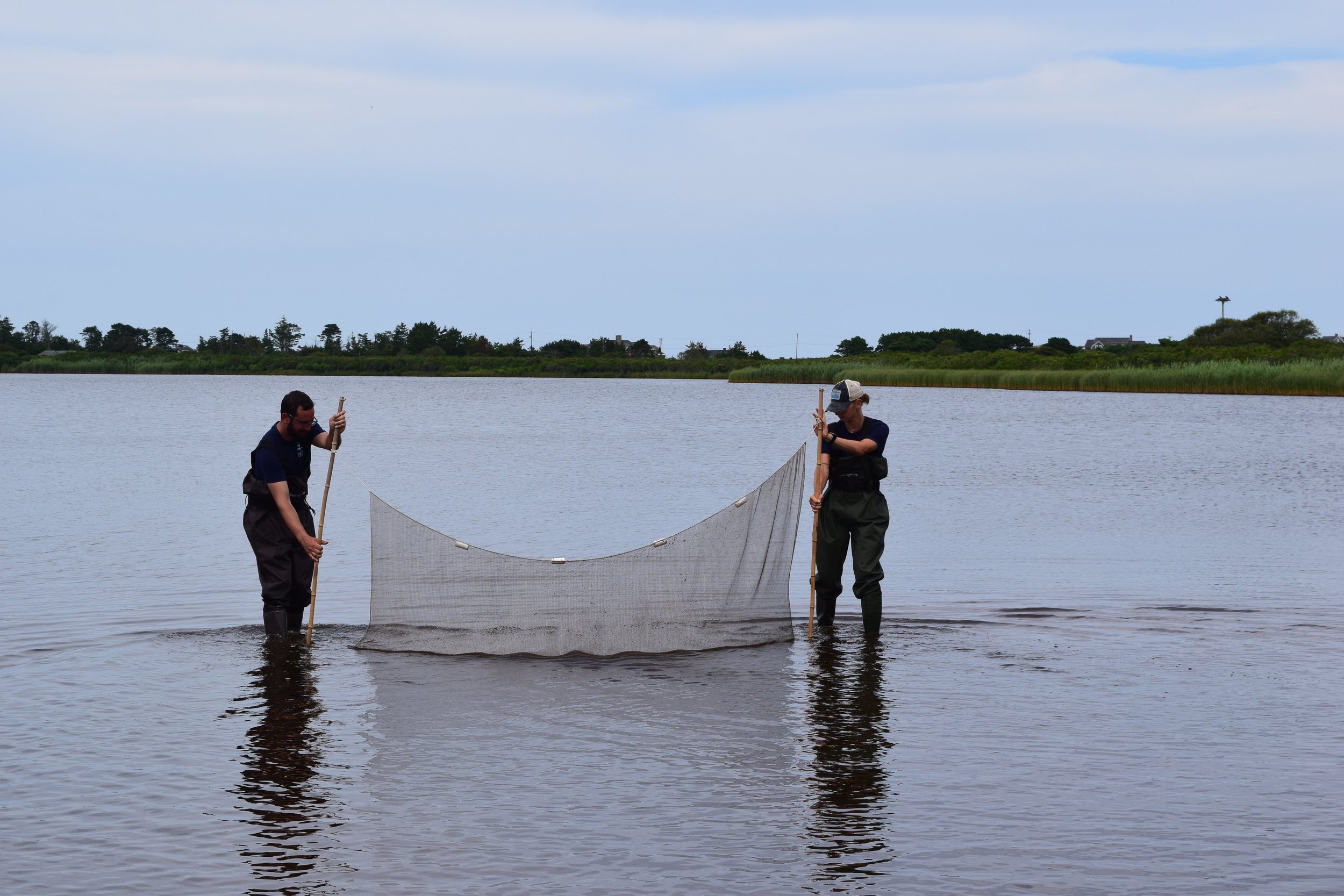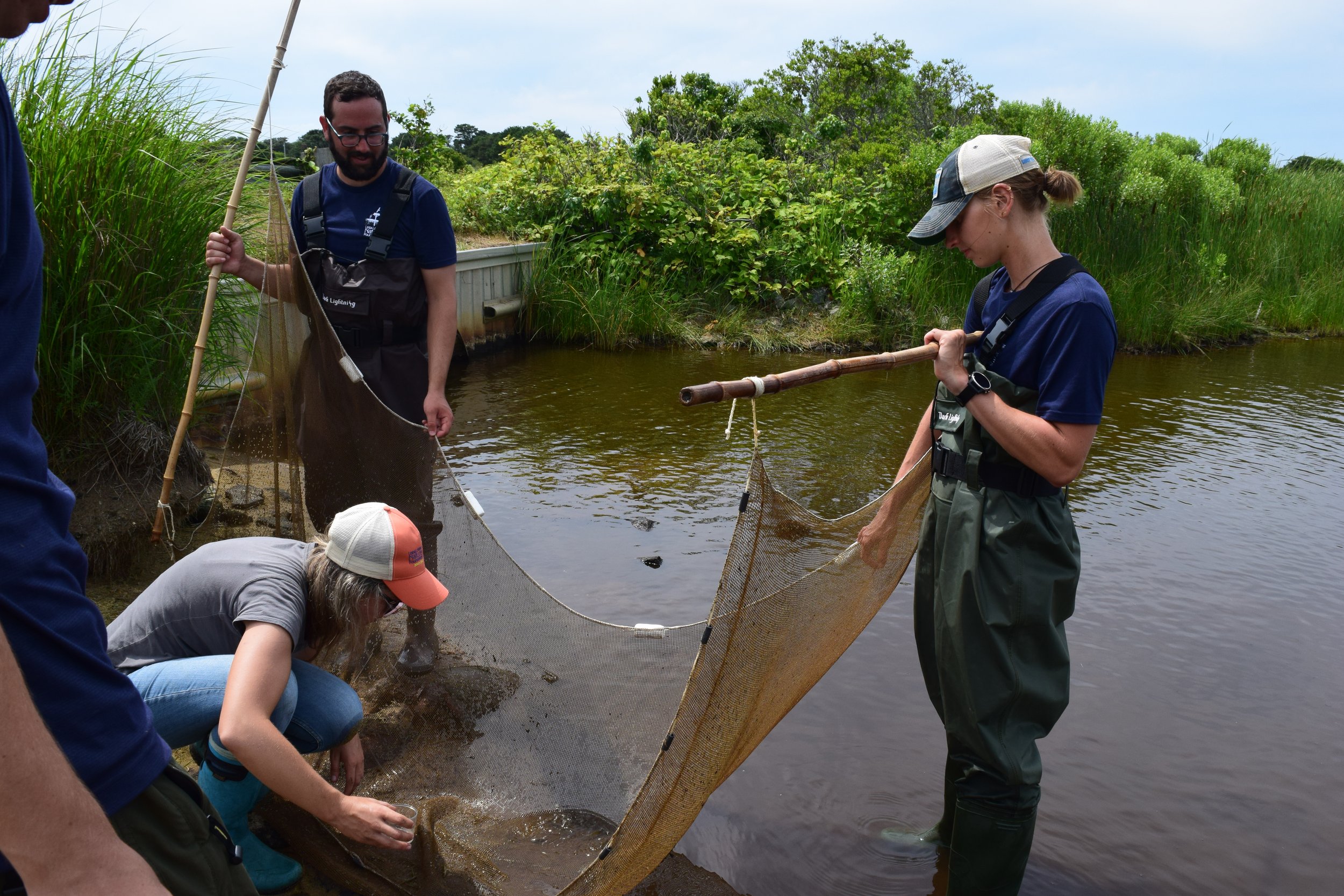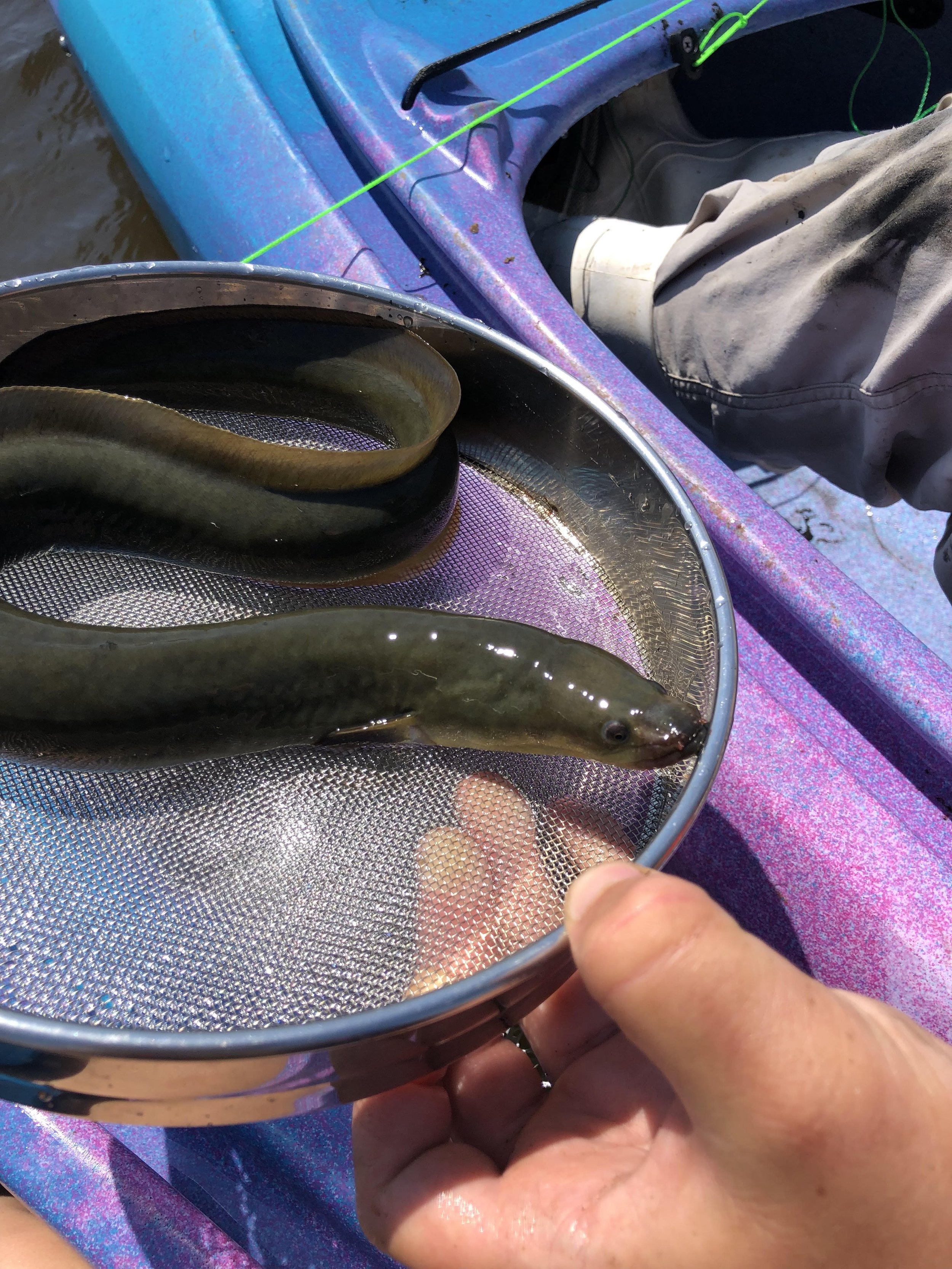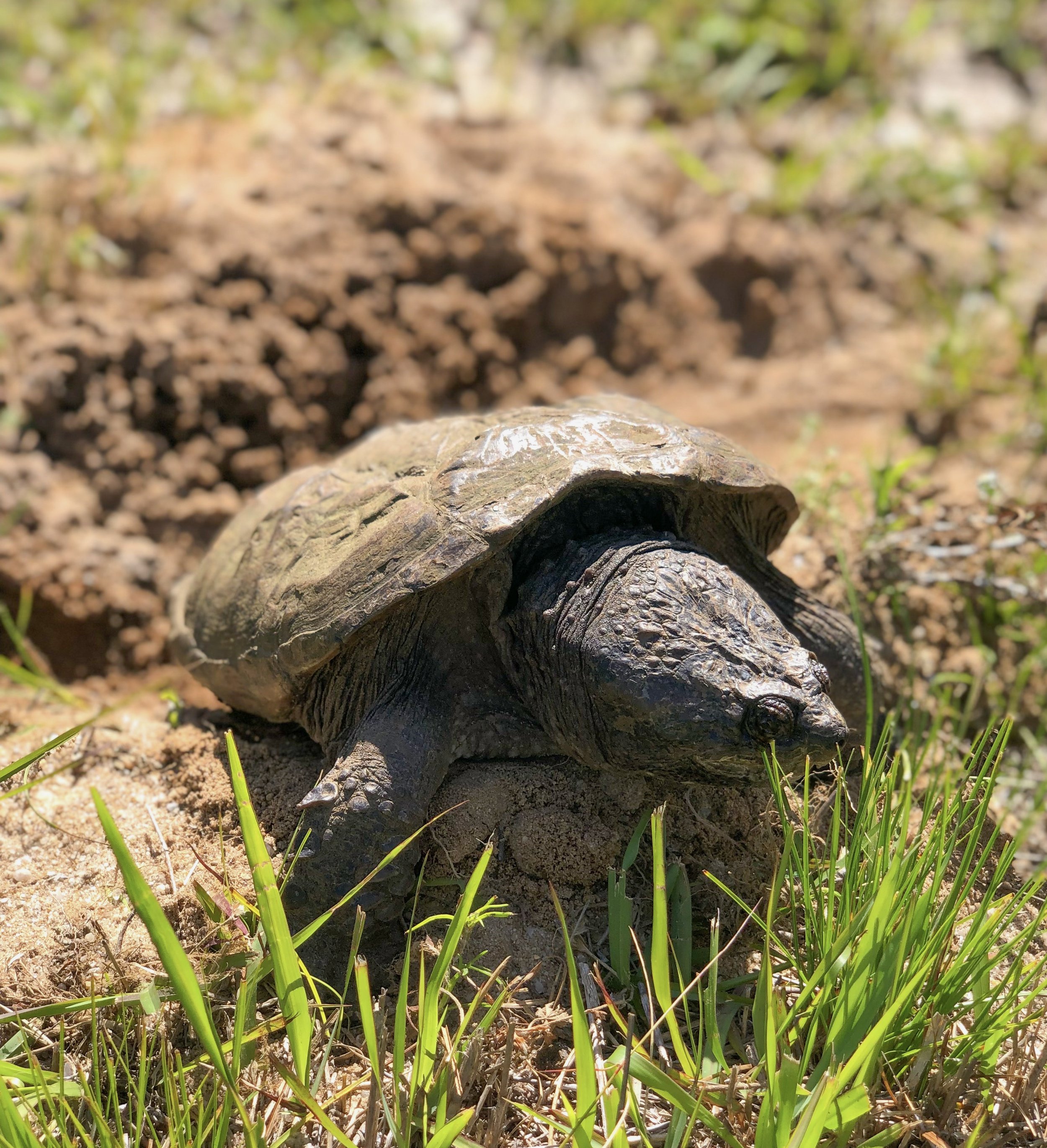BY LUKE MACKAY, ENVIRONMENTAL EDUCATION INTERN
In recent months, we have begun seining in the North Head of Long Pond. Seining is a fishing method that involves two people spreading out a large net (seine) in water and slowly dragging it in to catch the fish. We are not seining for sport, but rather to learn more about the different types of fish, crabs, and other species we might find in the pond.
Seth & Hannah run the seine net through the Head of Long Pond to see who’s home!
In the first round of seining we made some exciting new discoveries about the biodiversity of Long Pond. We entered the pond from the eastern shore and waded into the pond with the seine net. After making a couple of sweeps in the shallow water, we collected a large amount of fish and some crabs. More specifically, we caught a ton of Atlantic Silversides, juvenile White Perch, Mummichogs, Atlantic Blue Crabs, Northern Pipefish and even some small American Eels. There was an ample amount of Atlantic Silversides and White Perch while we only found a few Mummichogs and Northern Pipefish. We will have to do much more seining to understand a comprehensive view of what is found in the pond, but this first sample of fish was very informative and fascinating. We can be somewhat certain there are a good amount of White Perch in the pond because the Osprey are always diving and catching these fish to eat. We look forward to seining more in the future and seeing what we can learn!
The field team sorts through the fish collected in the seine net to see what species are present.
Although seining is certainly the most effective way to collect fish samples in the pond, we had some luck with another kind of capture method. During our weekly water quality monitoring, we placed minnow traps in the pond, simply thinking we may be able to get something in the net. When we checked the net, a wild surprise awaited us. What do you think we caught? We have caught snapping turtles in the traps before and a crab could easily crawl in. I don’t think anyone was ready for the almost two-foot American Eel (Anguilla rostrata) in the trap! Libby, Seth, and Hannah did a great job handling the slimy and slithering eel without getting bitten or injuring it.
The find of the summer: a large American Eel!
American Eels (and eels in general) are intriguing creatures that can reach lengths of up to four feet and live for around five years (or in rare cases even up to 20!). In Long Pond, these eels most likely feed on some of the small fish I identified above (Atlantic Silversides, White Perch, etc.) and possibly Atlantic Blue Crabs. Although American Eels are predators in their own right, Osprey have been known to prey on them. With so many Ospreys around the property, keep your eyes peeled for one of these magnificent raptors clutching a long, narrow eel in its talons.
American Eels are catadromous (like all eels), which means they live in freshwater and spawn in the ocean. They swim out of freshwater in the fall and go to the Sargasso Sea, an area just east of the Bahamas, to spawn and die (Chesapeake Bay Program, ND). Once fertilized, the larvae drift around for 9 - 12 months until they turn into 3 - 4 inch “glass eels” where currents carry them to the U.S. coast and they swim into rivers and other freshwater access points. At some point in their laborious journey, some eels have managed to make it all the way to the North Head of Long Pond, which makes sense since the pond is constantly open to the Atlantic Ocean via the Madaket Ditch.
Eels have a complicated, but fascinating life history.
Although you will not likely see these eels from above the water, late summer on Nantucket is a beautiful time of year to hit our trails!
The Seine Team! From left, Hannah, Seth, Daria, Libby & Luke








